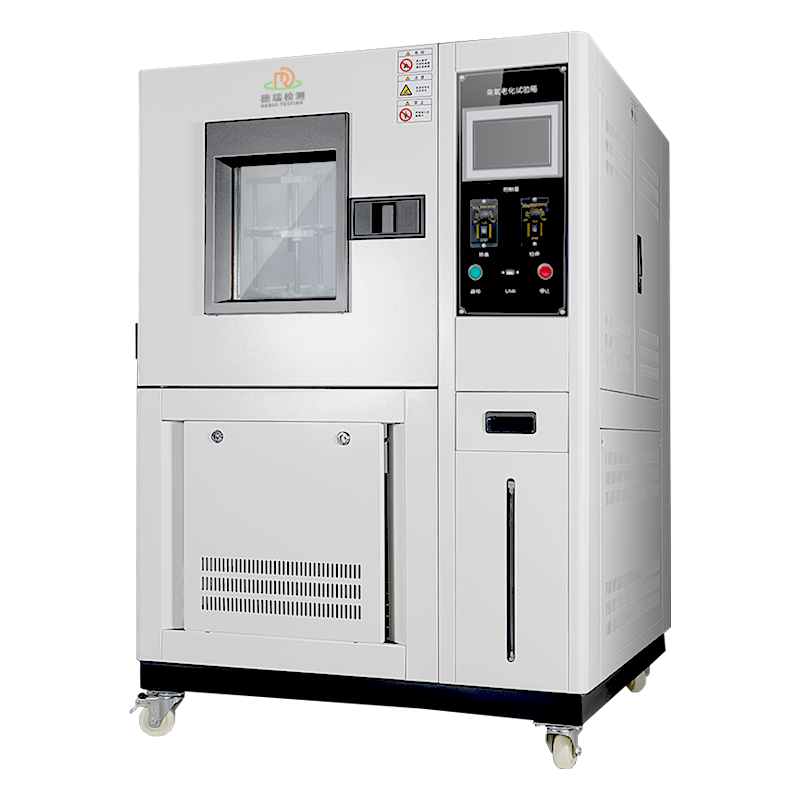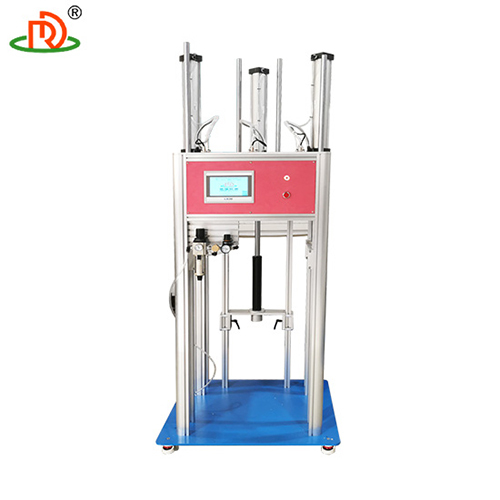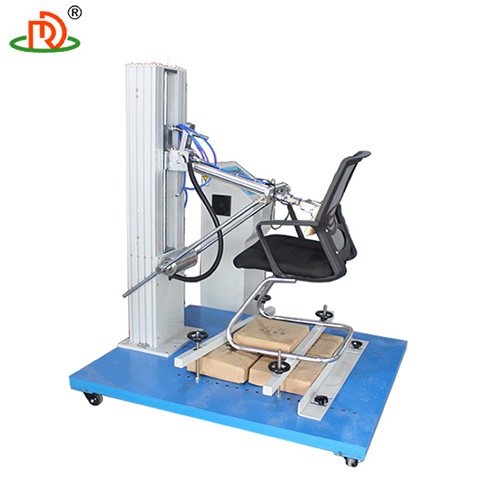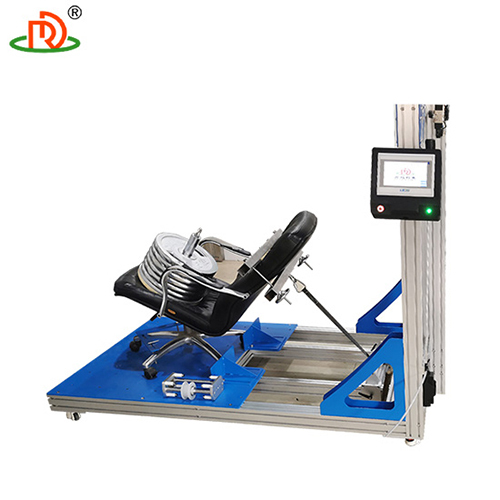
Copper accelerated ozone aging test chamber
Product Details:
Copper accelerated ozone aging test chamber Price And Quantity
- 338005.0 INR/Unit
- 1 Unit
Copper accelerated ozone aging test chamber Trade Information
- Paypal
- 100 Unit Per Month
- 7 Days
- All India
Product Description
Copper accelerated ozone aging test chamber Standard Features
| Item | Specification |
| Internal dimension | 450W*450D*500Hmm (100L) |
| Temperature range | RT+10~ 60 (suggest to use 402) |
| Temperature Fluctuation | 1 |
| Ozone concentration | 50~1000 pphm, adjustable (suggest to use 50pphm) |
| Ozone concentration deviation | 10% |
| Sample holder rotation | 360 degree rotation |
| Sample holder | 2pcs removable sample tray, SUS#304 stainless steel |
| Temperature controller | Programmable touch screen controller |
| Ozone concentration analysis | Concentration analysis meter |
| Ozone generator | High pressure silence discharge type |
| Protection system | Leakage, short circuit, over temperature, over heat |
1. The nature of the science: How does copper reconfigure the kinetics of ozone aging?
Copper is not a passive carrier in ozone aging tests, but rather accelerates material failure through a dual mechanism of catalyzed ozone decomposition and metal ion migration:
-
Catalyzing ozone decomposition: The copper surface promotes the conversion of ozone (O) to reactive oxygen (O-), and free radicals attack the molecular chain of the material 3-5 times faster;
-
Ion Migration Synergistic Corrosion: In humid environments, copper ions penetrate into material micro-cracks, triggering galvanic corrosion (e.g. rubber vulcanizing agent deactivation).
Equipment design challenges: traditional ozone chamber cannot simulate copper-catalyzed multiphase reactions, requiring reconstruction of the environmental simulation system.
2. Technological innovation: copper-ozone-hygrothermal multi-factor coupling system
2.1 Copper acceleration module design
-
Copper exposure control unit:
Built-in adjustable copper mesh array (purity 99.9%), supports proportional programming of copper surface area to ozone concentration (0.1-5cm/L);
Copper surface passivation coating (optional) to simulate the catalytic effects of different oxidation states of copper (e.g. differential effects of CuO/CuO on rubber aging).
-
Ion migration simulation:
Atomized copper salt solution (e.g. CuSO) injected into the system to achieve copper ion transport at the gas-liquid interface (in accordance with ASTM D4708 accelerated copper aging test).
2.2 Intelligent environmental coupling control
-
Dynamic response algorithm:
Multi-dimensional parameters of ozone concentration (20-500pphm), copper ion concentration (0-100ppm), temperature and humidity (-20~90/10-95%RH) real-time coupling control;
AI-based prediction model to automatically match copper catalytic strength with material failure thresholds (e.g., critical O-concentration of tire sidewall rubber).
-
Non-uniform field simulation:
Partitioned copper catalytic design to simulate gradient aging of materials at locally high catalytic intensities (e.g., automotive seals exposed differently in the engine compartment vs. outside).
3. Scenario empowerment: from basic research to industrial limit validation
3.1 Sealing materials for new energy batteries
-
Problem: Seal failure due to synergistic aging of electrolyte volatiles and copper collectors under ozone;
-
Solution:
Copper acceleration module to simulate the copper-electrolyte vapor environment inside the battery pack;
Quantify the coupled effect of ozone concentration and copper ion migration on silicone rubber swelling rate to optimize the sealing formulation.
3.2 Polymer Coating for Marine Equipment
-
Problem: Multi-factor superposition of high humidity + salt spray + ozone + copper alloy corrosion at sea;
-
Solution:
Copper salt fogging + ozone + humidity and heat triple cycle test mode;
Prediction of coating life decay curves around copper parts of real ships from copper catalyzed data.
4. Gr
eening and Intelligent Upgrading
-
Copper resource recycling system:
Electrolytic recovery rate of copper ions in waste liquid 95%, reducing the risk of heavy metal pollution;
Ozone tail gas is decomposed by copper-based catalyst at low temperature (conversion efficiency >99% at 80C).
-
Digital twin interface:
Access to materials molecular simulation software (e.g. Materials Studio) to compare experimental data with simulated aging paths in real time;
Generation of an acceleration factor database for copper-catalyzed ozone aging to support rapid lifetime prediction.
Generate an acceleration factor database for copper-catalyzed ozone aging to support rapid life prediction.
Reconfiguration of equipment selection logic: defining equipment configurations in terms of failure modes.
Material failure scenarios
Core configuration combinations
Output data dimensions
Wire and cable copper conductor contact aging
Copper network contact module + dynamic bending stress
Insulation Cr ack Density vs Copper Catalytic Strength
Ozone corrosion of electronic connectors
Copper ion atomization + high frequency electrical contact simulation
Contact resistance drift rate + copper migration depth
Outdoor paint UV-copper synergistic aging
Copper acceleration module + UV light source extension
Non-linear relationship between color difference E and copper catalytic area
Beyond Conventional: Why Copper Accelerated Ozone Chamber?
-
More realistic acceleration of failure: Copper catalysis reduces aging time by 50-70% and increases the consistency of the failure mode with natural exposure;
-
More accurate life prediction: multi-factor coupled data supports AI-driven reliability simulation (compliant with IEC 62506 accelerated test standard);
-
Lower R&D costs: a single test can replace the traditional ozone + salt spray + metal corrosion multi-equipment tandem test.

Price:
- 50
- 100
- 200
- 250
- 500
- 1000+








 English
English Spanish
Spanish French
French German
German Italian
Italian Chinese (Simplified)
Chinese (Simplified) Japanese
Japanese Korean
Korean Arabic
Arabic Portuguese
Portuguese